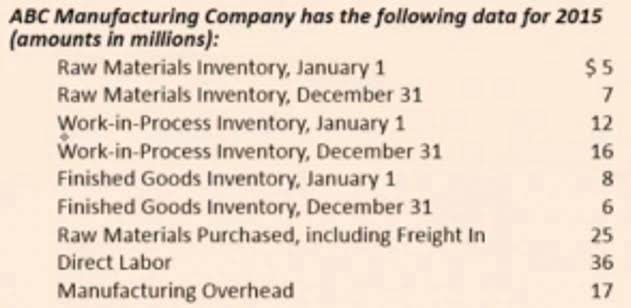
According to the US Bureau of Labor Statistics (BLS), most bookkeepers can learn the profession’s basics in about six months [3]. Once you become a qualified bookkeeper, you can work as a permanent employee or freelancer. Once in the system, invoices are digitally routed through the approval workflow, including multilevel approvals, according to specific rules that you establish up front, saving you countless hours of time each month. By following the steps outlined above, you can develop an effective financial strategy for your restaurant and stay on top of your expenses.
How do you create a restaurant P&L?
However, the 5 simple steps above will put down the foundation for a solid bookkeeping system. As you grow you will have to continually modify your bookkeeping system to meet your needs. In choosing between cash-basis and accrual-basis accounting, smaller restaurant operations tend to opt for the former, and larger operations may use both methods. Cash accounting involves recording revenue when customer payments are received and expenses when suppliers are paid, making it easier to gauge a restaurant’s cash position at any point in time.

Restaurant Accounting Divides Costs into Four Categories:
Every point of sale system (POS) has different capabilities when it comes to its daily sales reporting, so familiarize yourself with yours so that you know what every number on the daily sales report means. This is bookkeeping for restaurants further broken down into business-specific categories or sub-accounts, such as inventory, sales, and marketing. While setting up the chart of accounts, it’s important to decide the metrics you want to monitor.
- The challenge is finding an accounting system that efficiently manages a restaurant group’s finances based on the company’s accounting periods and corresponding budgets.
- NetSuite cloud accounting software is part of NetSuite ERP, which also handles inventory management, HR, and other core business functions.
- Effective communication is essential for recording those daily transactions.
- If you operate a larger restaurant group with multiple business units, you might find a more robust accounting system suits you better.
- A bookkeeping template can be a helpful tool for restaurant owners and managers who want to keep track of their accounting and stay on top of their restaurant’s financial performance.
- Luke O’Neill writes for growing businesses in fintech, legal SaaS, and education.
Inventory management
As mentioned, the accuracy of a restaurant’s financial statements is paramount, especially for businesses that are legally required to submit them to local authorities or the federal government. Besides, accurate bookkeeping simply makes an accountant’s job easier when preparing financial statements and taxes—and if the accountant is outsourced, they won’t need to be hired for as long, saving the business money. Also, the more accurate the bookkeeping data, the sharper the insights restaurant leadership will glean from financial reports as they plan for the future. Also known as accounts payable (AP), these are the bills that restaurants pay to food wholesalers, wine merchants, cleaning companies, launderers—any organization providing goods or services. Paper invoices can be digitized with restaurant accounting software that allows teams to import data by taking photos. Teams must ensure that any scanned numbers are correct and that purchase orders (POs) match the invoices as part of the AP process.

Top 5 Common Restaurant Accounting Mistakes and How to Avoid Them
This helps restaurants make decisions to maintain their margins amid fluctuating prices. This report helps restaurant leaders understand how much of each ingredient they’re using versus how much they should be using based on the restaurant’s recipes, in terms of both cost and quantity. For example, an operator might notice on their income statement that their COGS is above budget. They could pull an actual versus theoretical variance report to determine which ingredients are contributing to that overage, then implement procedures to better control that ingredient’s use. Perhaps the variance for pizza sauce is high—the operator might implement protocols to carefully measure portions going onto each dish. This technology is powering automation tools that streamline key accounting processes, thus minimizing tedious work.
Eliminate stacks of invoices with AP automation
This method allows businesses to record their generated income when cash is received from services rendered or paid for expenses and costs. Since restaurants and bars deal with a lot of cash daily, this method is the preferred method. “Cost of goods sold” refers to the products you buy that make up your product. And in the restaurant business, it’s no secret that, in order to make food, you’ll have to buy ingredients. If you’re opening a franchise restaurant business, such as Pizza Hut or TGI Friday’s, you’ll source your food directly from suppliers as instructed by the home office.
- This figure reflects a compound annual growth rate of 10.5 percent across the decade.
- Particularities to bookkeeping in the restaurant industry include loyalty programs that work on a point-based system or promise a free meal after a certain number of purchases add complexity to restaurant bookkeeping.
- As an owner, you know the challenges of running a restaurant, such as staffing, inventory management, and controlling the cost of goods sold.
- Assets can be current or fixed, such as cash from customers and kitchen equipment, respectively.
- With features like an automatic nightly email of key business metrics and real-time sales data, you’ll have everything you need to manage your restaurant like a pro.
Step 2: Pay restaurant expenses
- With the right tools, you can easily track financial data, generate accurate financial reports and monitor restaurant performance.
- Restaurants with less than $1 million in profits can choose between cash or accrual accounting.
- The most common accounting method of restaurants is cash accounting or cash basis.
- A group of OpenAI insiders is blowing the whistle on what they say is a culture of recklessness and secrecy at the San Francisco artificial intelligence company, which is racing to build the most powerful A.I.

Recent Comments